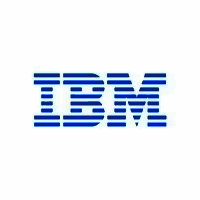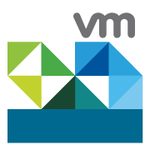Description

IBM PowerVM

Nomadesk
Comprehensive Overview: IBM PowerVM vs Nomadesk
IBM PowerVM
a) Primary Functions and Target Markets
Primary Functions:
- IBM PowerVM is primarily a virtualization solution designed specifically for IBM's Power Systems servers. It allows users to create and manage virtual machines (VMs) on IBM Power hardware, optimizing resource utilization and enhancing server workload performance.
- Key functions include micro-partitioning, dynamic resource allocation, shared processor pools, and live partition mobility, which allows moving VMs between servers without downtime.
Target Markets:
- PowerVM primarily targets large enterprises and organizations that require robust, scalable server infrastructure. Industries such as finance, healthcare, government, and technology, where mission-critical applications and databases like Oracle, SAP, and DB2 are prevalent, are focal areas for PowerVM.
b) Market Share and User Base
- IBM PowerVM is a key player in the enterprise virtualization market, particularly for businesses that rely on IBM Power Systems. Although exact market share figures fluctuate, its adoption is solid among IBM's legacy customers who need reliable performance for high-demand applications.
- While not as widely adopted as x86 virtualization solutions like VMware or Hyper-V in terms of general market share, PowerVM commands a significant presence within its niche, offering specific advantages that appeal to Power Systems users.
c) Key Differentiating Factors
- Hardware Optimization: Deep integration with IBM Power Systems provides optimized performance that can be hard to achieve with generic virtualization solutions.
- Capacity and Efficiency: PowerVM supports high levels of VM density and resource utilization, benefiting enterprises needing high availability and workload optimization.
- Reliability and Security: Offers robust security and reliability features, crucial for industries handling sensitive data and requiring high uptime.
- Legacy Support: Tailored for organizations with existing IBM infrastructure, facilitating seamless integration and continuity.
Nomadesk
a) Primary Functions and Target Markets
Primary Functions:
- Nomadesk is a cloud file sharing, synchronization, and storage solution designed to enable secure file access and collaboration for businesses.
- Offers features such as file sharing, encrypted storage, team collaboration, data backup, and ‘virtual drive’ creation which allows users to access files offline.
Target Markets:
- Nomadesk primarily targets small to medium-sized businesses (SMBs) looking for secure and efficient cloud-based file sharing and storage solutions. Its ease of use and focus on security make it appealing to industries like professional services, legal, and creative industries.
b) Market Share and User Base
- Nomadesk is a more specialized player in the broader cloud storage and file-sharing market. It competes with major providers such as Dropbox Business, Google Workspace, and Microsoft OneDrive for Business.
- Its market share is smaller compared to these giants; however, Nomadesk appeals to users needing advanced security features and ease of integration into existing business workflows.
c) Key Differentiating Factors
- Security-Focused Features: With end-to-end encryption and robust security measures, Nomadesk prioritizes data protection, making it attractive for businesses with stringent compliance requirements.
- Ease of Collaboration: Offers a straightforward interface for team collaboration, with features designed to simplify file sharing across distributed teams.
- Local Drive Integration: Offers a virtual drive feature allowing offline access and synchronization, providing flexibility not always found in traditional cloud storage solutions.
- Cost-Effectiveness: For SMBs, Nomadesk may offer a more budget-friendly alternative compared to larger competitors, especially for those with moderate data and collaboration needs.
Comparative Overview
In comparing IBM PowerVM and Nomadesk, it’s important to note that they serve distinctly different functions and market segments. PowerVM is centered around server virtualization for IBM hardware, targeting industries with intensive computational needs, whereas Nomadesk focuses on cloud-based file management and collaboration for SMBs. Their core audiences and functionalities rarely overlap, reflecting their unique strengths in enterprise systems and business productivity, respectively.
Contact Info

Year founded :
Not Available
Not Available
Not Available
Not Available
Not Available

Year founded :
2004
+32 9 233 68 86
Not Available
Belgium
http://www.linkedin.com/company/nomadesk-bv
Feature Similarity Breakdown: IBM PowerVM, Nomadesk
IBM PowerVM and Nomadesk are quite different in terms of their core functionalities and target audiences. Here's a breakdown of their feature similarities and differences:
a) Core Features in Common
IBM PowerVM:
- Virtualization technology primarily for IBM Power Systems.
- Allows users to partition a single physical server into multiple virtual servers.
- Features include dynamic resource allocation, live partition mobility, and integrated management tools.
Nomadesk:
- A cloud-based file sharing and synchronization service.
- Provides secure data sharing, synchronization across devices, and backup solutions.
Common Features:
- Data Security: Both platforms prioritize data security, although implemented differently. PowerVM secures virtual environments, while Nomadesk secures files in the cloud.
- Scalability: Each solution allows scalability — PowerVM through virtualization and partitioning of resources; Nomadesk through scalable cloud storage.
- Management Tools: Both offer management interfaces; however, they cater to different management needs (virtual server management vs. file management).
b) User Interface Comparison
-
IBM PowerVM:
- Typically accessed via the HMC (Hardware Management Console), which provides a graphical user interface for managing virtual environments.
- The user interface is designed for IT administrators familiar with server and virtualization concepts.
- Focus is on functionality and detailed control, with less emphasis on a modern user experience.
-
Nomadesk:
- Provides a user-friendly web interface along with desktop and mobile applications.
- Emphasizes ease of use for end-users, particularly for those who are not IT professionals.
- Interface is intuitive, focusing on drag-and-drop file management, clear navigation, and ease of access to features.
c) Unique Features
-
IBM PowerVM:
- Advanced Virtualization Capabilities: Offers high-performance virtualization specifically tailored for IBM Power Systems.
- Live Partition Mobility: Allows live migration of partitions without downtime.
- Dynamic Resource Allocation: Sophisticated resource management tools that optimize server workloads.
-
Nomadesk:
- Secure File Sharing and Synchronization: Focuses on encrypted file sharing, both locally and in the cloud.
- Remote Wipe Feature: Allows users to remotely delete files from a lost or stolen device to maintain data security.
- Collaborative Tools: Enables teams to collaborate on files in real-time with document versioning and access control.
Summary
While IBM PowerVM and Nomadesk share some broad features like security and scalability, they serve entirely different purposes and markets. PowerVM is oriented towards IT professionals managing large servers, whereas Nomadesk caters to users and businesses needing secure file sharing and collaboration solutions. The significant differences lie in their core functionalities, user interfaces, and unique features tailored to their specific use cases.
Features

Not Available

Not Available
Best Fit Use Cases: IBM PowerVM, Nomadesk
IBM PowerVM and Nomadesk are two distinct products catering to different needs and industries. Here's a detailed analysis of their best fit use cases:
a) IBM PowerVM
Best Fit Use Cases:
-
Large Enterprises and Data-Intensive Businesses:
- IBM PowerVM is specifically designed for large enterprises that require robust virtualization capabilities to manage extensive and complex IT environments.
- Ideal for businesses that handle mission-critical workloads and require high-performance computing, such as financial services, insurance, and healthcare.
-
Industries Requiring High Availability and Scalability:
- Organizations that need high uptime, scalability, and resilience can benefit significantly from PowerVM. It allows for advanced virtualization features like live partition mobility and dynamic resource allocation.
- Examples include retail companies with fluctuating demands during peak seasons and telecommunication companies needing consistent uptime.
-
Businesses Running IBM AIX, IBM i, or Linux on IBM Power Systems:
- Companies that rely on IBM’s ecosystem and run applications on IBM AIX, IBM i, or Linux can leverage PowerVM’s full capabilities for optimized and secure virtualization.
-
Cloud and Hybrid Cloud Environments:
- Businesses transitioning to or operating in a hybrid cloud environment benefit from PowerVM’s ability to seamlessly integrate on-premises and cloud infrastructures.
b) Nomadesk
Best Fit Use Cases:
-
Small to Medium-Sized Businesses (SMBs):
- Nomadesk is ideal for SMBs that require secure file sharing and collaboration solutions without investing heavily in an extensive IT infrastructure.
- Especially useful for teams that are remote or distributed, enabling easy access to files from anywhere.
-
Professional Services and Creative Industries:
- Firms in industries such as legal, consulting, architecture, and graphic design can utilize Nomadesk for secure document management and collaboration.
- Its emphasis on security and ease of use makes it ideal for handling sensitive client documents and creative assets.
-
Companies Prioritizing Data Security and Compliance:
- Businesses needing to comply with stringent data protection regulations can leverage Nomadesk's encryption and data loss prevention features.
- It is suitable for industries like healthcare and finance, where data security is paramount.
-
Temporary Projects or Campaigns:
- Nomadesk can be an excellent choice for businesses running temporary projects or marketing campaigns, needing a secure, easy-to-use platform for file sharing.
d) Catering to Different Industry Verticals or Company Sizes
IBM PowerVM:
- Industry Verticals: Finance, healthcare, retail, telecommunications, and government.
- Company Sizes: Primarily targets large enterprises and organizations with complex IT needs.
- Advantages: Offers unparalleled virtualization capabilities, high performance, and reliability, necessary for industries that cannot afford downtime or need to process large data volumes.
Nomadesk:
- Industry Verticals: Legal, consulting, creative industries, and any sector prioritizing file security and collaboration.
- Company Sizes: Focuses on SMBs but can be used by larger teams seeking straightforward file-sharing solutions with enhanced security.
- Advantages: Provides an affordable, user-friendly interface for secure file sharing, suitable for companies that need to collaborate remotely while ensuring data security and compliance.
In summary, IBM PowerVM is best suited for large enterprises dealing with complex IT workloads, whereas Nomadesk offers secure and convenient file sharing for SMBs and industries needing robust collaboration and security features.
Pricing

Pricing Not Available

Pricing Not Available
Metrics History
Metrics History
Comparing undefined across companies
Conclusion & Final Verdict: IBM PowerVM vs Nomadesk
To deliver a comprehensive conclusion and final verdict for IBM PowerVM and Nomadesk, we need to consider several factors, including functionality, performance, usability, cost, and specific use cases. Given the nature of these two products, which serve different primary purposes—IBM PowerVM as a virtualization solution and Nomadesk as a secure file sharing and synchronization service—it's important to contextualize the comparison based on users' specific needs.
A) Best Overall Value:
The choice between IBM PowerVM and Nomadesk on overall value depends largely on the use case:
-
IBM PowerVM offers immense value for organizations looking for robust virtualization solutions, particularly those leveraging IBM's Power Systems. Its strength lies in its capabilities for partitioning systems, improving resource utilization, and enhancing flexibility and scalability within data centers.
-
Nomadesk, on the other hand, presents significant value for businesses needing secure, efficient file sharing and collaboration tools. It excels in providing easy-to-use cloud storage with security features suitable for small to medium-sized enterprises.
If your core need is server virtualization and managing complex IT infrastructure efficiently, IBM PowerVM is likely the better choice. However, if secure file sharing and collaboration are your primary requirements, Nomadesk provides more specific value.
B) Pros and Cons:
IBM PowerVM:
Pros:
- Scalability: Offers excellent scalability options for expanding businesses.
- Performance: High performance and stability for managing virtual environments.
- Integration: Seamless integration with IBM's hardware and support for other enterprise systems.
Cons:
- Cost: Potentially high setup and maintenance costs, requiring expertise.
- Complexity: May have a steeper learning curve, demanding specialized knowledge.
- Hardware Limitations: Best suited for IBM Power Systems, limiting hardware flexibility.
Nomadesk:
Pros:
- User-friendly: Intuitive interface, simple for users without technical expertise.
- Security: Strong focus on data encryption and security, crucial for sensitive information.
- Collaboration Tools: Facilitates easy collaboration within teams and with external partners.
Cons:
- Limited Features: As a simpler, niche service, it may not offer the extensive features required by larger enterprises.
- Integration Constraints: May not integrate as deeply into enterprise-grade infrastructure or workflow systems as some competitor services.
C) Recommendations:
For users trying to decide between IBM PowerVM and Nomadesk, the recommendation is to align the decision with your business priorities and existing infrastructure:
-
Choose IBM PowerVM if:
- Your organization is already invested in IBM Power Systems and requires advanced virtualization solutions.
- You need to manage large data centers with complex workloads.
- Scalability and resource optimization are critical.
-
Choose Nomadesk if:
- Your primary need is secure file synchronization and collaboration across diverse teams.
- You prefer a cloud-based solution with a low barrier to entry and ease of use.
- Security with respect to file sharing and simplicity are top priorities.
Both products excel in their respective domains, and the optimal choice is contingent on specific organizational needs, existing investments, and technological strategies. Always consider conducting pilot testing and seeking trials to assess real-world performance and compatibility with your workflows before making a final decision.
Add to compare
Add similar companies



